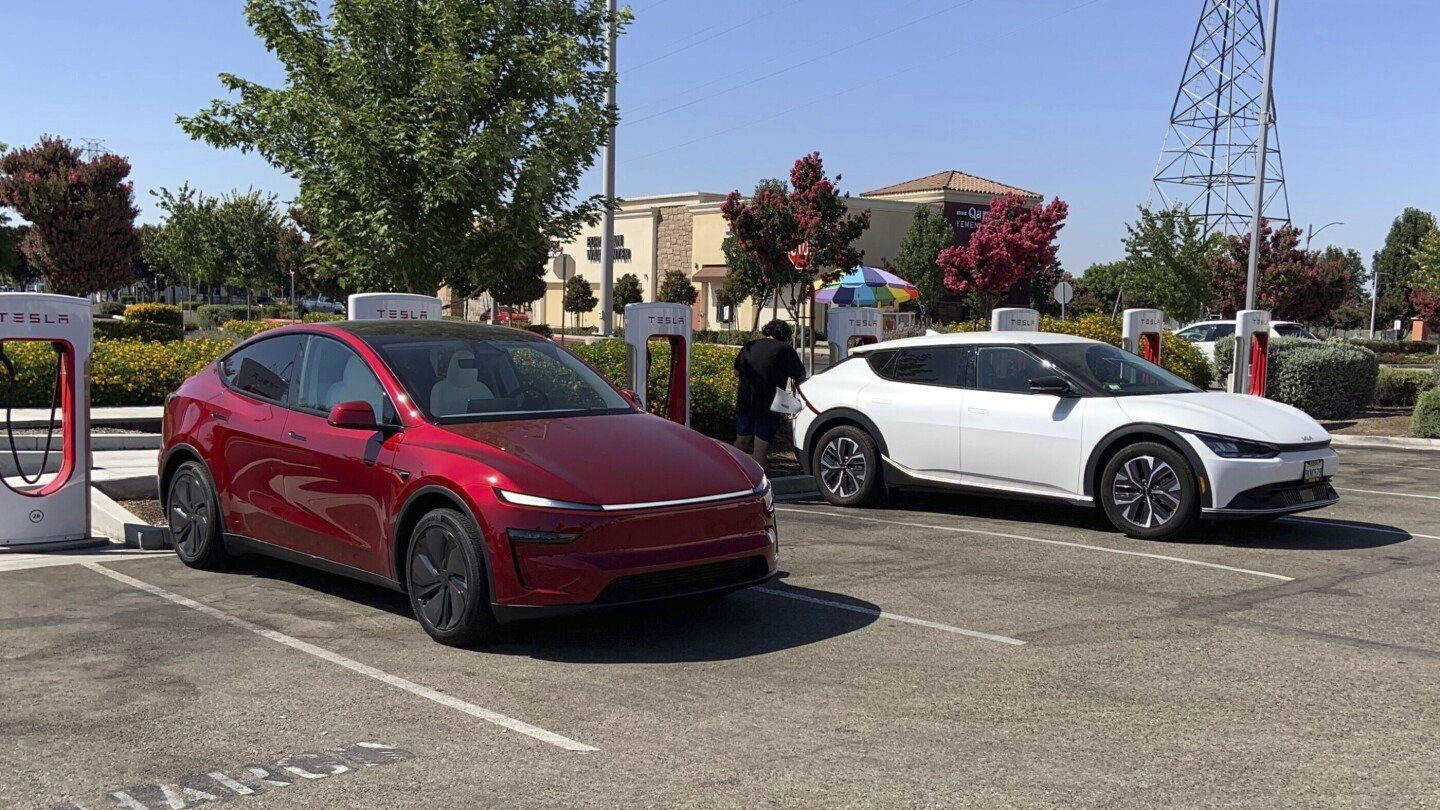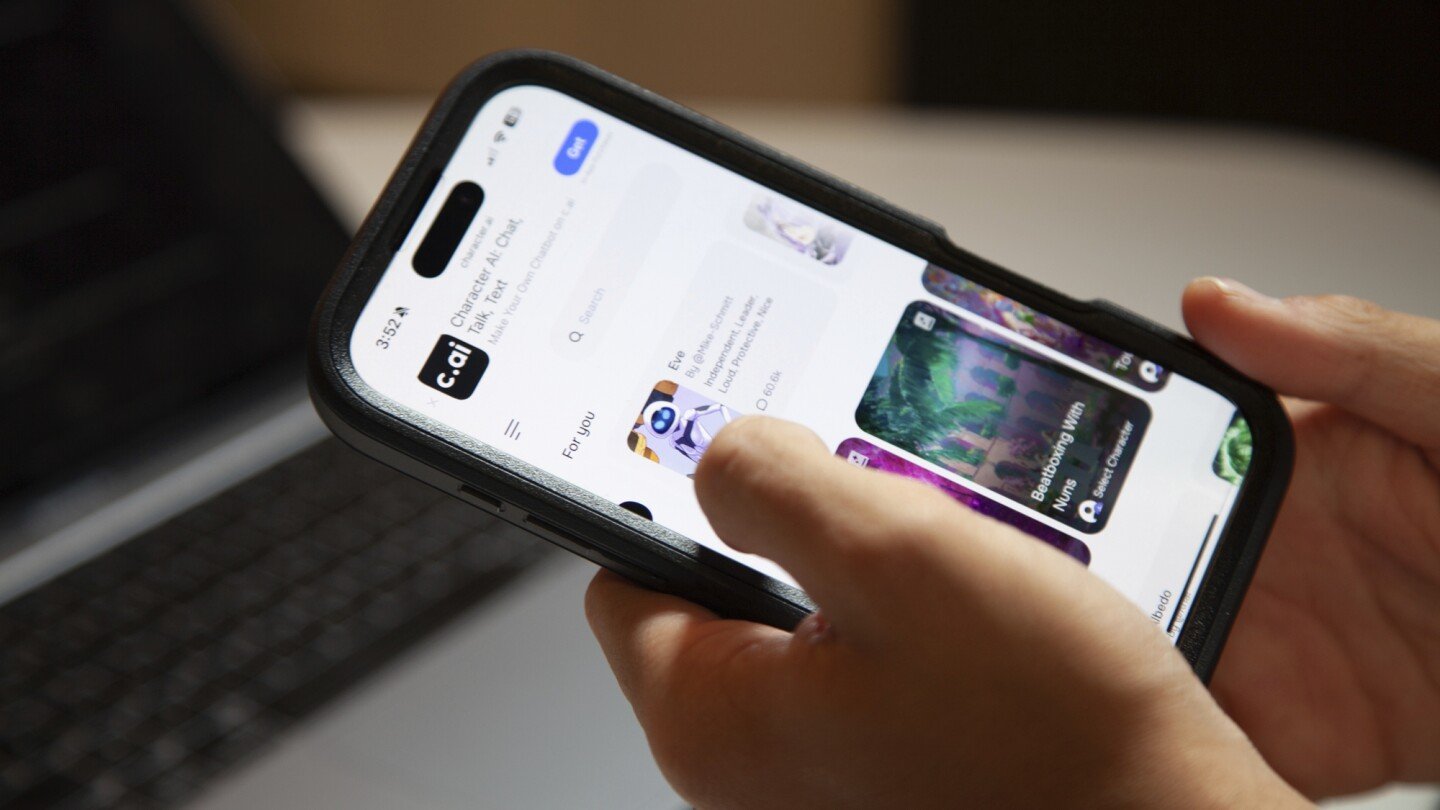Lifestyle
It’s called ‘ambiguous loss,’ and it plagues families of missing people

Rachel Ganz’s husband might be alive. But he might not be. More than three months after he was last seen near the Eleven Point River in Missouri amid severe flooding and evacuation orders, Jon Ganz is just … missing.
That leaves Rachel, 45, in a limbo of sorrow and frustration, awakening “every morning to a reality I don’t want to exist in.” She dwells there in a liminal state, she wrote by email July 11, with a stream of questions running through her head: “Is he trapped by debris in the river? Is he in a tangled mass of debris on the riverbank? Did he wander off into the forested area instead?” And one that remains stubbornly unanswered: “Are they ever going to find him?”
“Obviously I want my husband returned alive,” she wrote to The Associated Press, “though I am envious of those who have death certificates.”
It’s called ‘ambiguous loss’
Like the families of the missing after the July 4 Texas floods experienced for much of this month, Ganz is suffering from what grief experts call ambiguous loss: the agony of living in the absence of a loved one whose fate is uncertain. Humans across borders, cultures and time unfortunately know it well. Ambiguous loss can be intimate, like Ganz’ experience, or global, as in the cases of the missing from the Sept. 11 attacks, tsunamis in the Indian Ocean and Japan, the Turkey-Syria earthquake, the Israel-Hamas war and the Russian invasion of Ukraine.
The distinguishing feature, according to Pauline Boss, the researcher who coined the term in the 1970s, is the absence of ritual — a wake, a funeral, throwing dirt on a grave — to help the families left behind accept the loss. The only way forward, experts say, is learning to live with the uncertainty — a concept not well-tolerated in Western cultures.
“We’re in a state of mind, a state of the nation, right now where you either win or you lose, it’s either black or its white,” said Boss, a professor emeritus at the University of Minnesota who has researched ambiguous loss globally over a half century. “You have to let go of the binary to get past it, and some never do. They are frozen. They are stuck.”
Sarah Wayland, a social work professor from Central Queensland University in Sydney, says ambiguous loss is different from mourning because it’s about “repetitive trauma exposure,” from the 24-hour news cycle and social media. Then there is a devastating quiet that descends on the people left behind when interest has moved on to something else.
“They might be living in this space of dreading but also hoping at the same time,” Wayland said. “And they are experiencing this loss both publicly and privately.”
The uncertainty is like ‘a knife constantly making new cuts’
Heavy rains drove a wall of water through Texas Hill Country in the middle of the night July 4 , killing at least 132 people and leaving nearly 200 missing as of last week, though that number has dwindled as this week begins. Over just two hours, the Guadalupe River at Comfort, Texas, rose from hip-height to three stories tall, sending water weighing as much as the Empire State building downstream roughly every minute it remained at its crest.
Those without bodies to bury have been frozen in a specific state of numbness and horror — and uncertainty. “It’s beyond human imagination to believe that a loved one is dead,” Boss says.
This feeling can come in any global circumstance. Lidiia Rudenko, 39, represents a group of families in Ukraine whose relatives are missing in action. Her husband, Sergey, 41, has been missing since June 24, 2024, when his marine brigade battled the Russian army near Krynky. He’s one of tens of thousands of Ukrainians missing since the Russian invasion in 2022. And she is one of thousands in Ukraine left behind.
“Some people fall into grief and can no longer do anything, neither act nor think, while others start to act as quickly as possible and take the situation into their own hands, as I did,” Rudenko said. “There are days when you can’t get out of bed,” she said. “Sometimes we call it “getting sick. And we allow ourselves to get sick a little, cry it out, live through it, and fight again.”
For nearly a decade, Leah Goldin was part of a very small number of people in Israel with the dubious distinction of being the family of of a hostage.
Her son, Hadar Goldin, 23, a second lieutenant in the Israeli army, was killed, then his body taken on August 1, 2014. A blood-soaked shirt, prayer fringes and other evidence found in the tunnel where Goldin’s body had been held led the Israeli army to determine he’d been killed, she said. His body has never been returned.
Her family’s journey didn’t dovetail with the regular oscillations of grief. They held what Leah Goldin now calls a “pseudo-funeral’ including Goldin’s shirt and fringes, at the urging of Israel’s military rabbis. But the lingering uncertainty was like a “knife constantly making new cuts.”.
In the dizzying days after Hamas’ attack on southern Israel on Oct. 7, 2023, the Goldin family threw themselves into attempting to help hundreds of families of the 251 people Hamas had dragged into Gaza. But for a time, the Goldins found themselves shunned as advocacy for the Oct. 7 hostages surged.
“We were a symbol of failure,” Leah Goldin said. “People said, ‘We aren’t like you. Our kids will come back soon.’” She understood their fear, but Goldin, who had spent a decade pushing for Hamas to release her son’s body, was devastated by the implication. In time, the hostage families brought her more into the fold, learning from her experience.
Hamas still holds 50 Israeli hostages, fewer than half of whom are believed to be alive. In Gaza, Israel’s offensive has killed nearly 59,000 Palestinians, more than half of them women and children, according to Gaza’s Health Ministry, which doesn’t say how many militants have been killed but says over half of the dead have been women and children. Thousands of the dead are believed to be buried under rubble throughout the enclave.
How to support families of the missing — and what’s not helpful
Ganz, whose husband went missing in Missouri in April, said the sheriff’s department and others searched far and wide at first. She posted fliers around the town where his car was found, and on social media. Then someone accused her of “grieving without proof,” a remark that still makes her fume.
“One of my biggest frustrations has been people stating, ‘If you need anything, please let me know,’” Ganz said. That puts the burden on her, and follow-through has been hard to come by, she said. “We already have enough ambiguity.”
She’s thinking about setting up a nonprofit organization in Jon’s honor, dedicated to breaking the stigma against men getting therapy, to show “that it’s not weak.” That tracks with Goldin’s thinking that taking action can help resolve loss — and with Rudenko’s experience in Ukraine.
Boss recommends separate community meetings for families of the confirmed dead and those of the missing. For the latter, a specific acknowledgement is helpful: “You have to first say to the people, ‘What you are experiencing is an ambiguous loss. It’s one of the most difficult kinds of losses there is because there’s no resolution. It’s not your fault,’” Boss said.
In Ukraine, Rudenko said it helps to recognize that families of the missing and everyone else live in “two different worlds.”
“Sometimes we don’t need words, because people who have not been affected by ambiguous loss will never find the right words,” she said. “Sometimes we just need to be hugged and left in silence.”
Lifestyle
Edmunds: Five expert tips to make cross-country EV driving easy

The idea of a cross-country road trip in an electric vehicle might seem daunting. After all, it’s not hard to envision getting stranded on the side of the road with a depleted battery or being stuck in a parking lot, charging for hours. But there are ways to easily avoid these worst-case scenarios. The experts at Edmunds have plenty of experience driving electric vehicles, and here they share their five best tips on how to make cross-country driving in an EV easy.
Use EV route planning applications
Minimizing the number of charging stations you visit and your time at them is key to efficient road-tripping in an EV. To accomplish this, use a route planning application. A route planner helps you determine where and when you should stop to charge to reach your destination.
The navigation system in most new EVs typically has this functionality built in. You simply enter your destination, and the navigation system automatically calculates where you will need to charge along your route. In our experience, Tesla vehicles have the best route planning capability. EVs that utilize Google Maps as their onboard navigation system have a similar capability. Many of the latest EVs from General Motors, such as the Chevrolet Equinox EV, have Google Maps integration.
Alternatively, you can use an EV route planning smartphone app such as A Better Route Planner (ABRP) or PlugShare. We prefer ABRP because it’s available as an app or through an internet browser. It also shows more details at each stop, like the expected battery percentage. When using a route planner, stick to Level 3 fast charging stations when driving. Slower Level 2 stations will take hours but are ideal for overnight charging.
Use Tesla charging stations
The Tesla Supercharger network of fast charging stations is the largest in the country. We recommend using them on a cross-country trip because they are usually very reliable and have more charging stalls per location than most networks. Teslas have access to them and certain non-Tesla EVs are also eligible to use them, but most non-Tesla EVs need an adapter to charge at a Tesla Supercharger. Check with your local service center or search online to determine if your EV is compatible. If you have a non-Tesla EV that has access, change the settings in your route planner to include Tesla stations.
If your EV cannot charge at Tesla stations, you’ll need to utilize other third-party charging station networks. Some of the largest networks include Electrify America, EVgo and ChargePoint.
Have a backup plan, and leave a range cushion
When planning a route that does not use Tesla Superchargers, it’s best to have a backup charging station for each stop. Charging stations can sometimes be out of order, and in some cases, like during a holiday or on busy highways, there could be long lines. To find the status of a specific charging station, download the app of the company the station belongs to. Make sure to leave yourself enough range to make it to your backup station as well.
Stay in hotels with on-site charging stations
Staying at hotels with on-site charging stations can save time and money. Hotel charging stations are typically Level 2 stations that can fully charge your battery overnight, allowing you to start your trip immediately instead of charging before you hit the highway. They are usually more affordable than fast charging stations, and in some cases, are free. One way to find hotels with charging stations is by using the PlugShare app. This app contains a database of charging stations, and you can filter it to show stations connected with lodging locations.
Use charging stations that have amenities
It’s fair to expect that each charging stop you make in your EV will take 20-45 minutes. To make the most of that time, charge at stations with a convenience store, retail store or restaurant nearby. That way, you can use the bathroom, grab some stacks or even get a full meal while your vehicle is charging. Many charging stations are located near stores or restaurants, but not all. You can use Google Maps or similar smartphone apps to find out what’s within walking distance of the charging stations you plan on using. You can change the stations your route planner recommends as long as they aren’t too far away.
Edmunds says
Planning a cross-country trip in an EV takes extra effort, but doing it properly can make the journey nearly as smooth as in a gas-powered car. Give yourself access to as many fast charging stations as possible by choosing an EV that’s capable of using Tesla Supercharger stations.
____
This story was provided to The Associated Press by the automotive website Edmunds.
Michael Cantu is a contributor at Edmunds.
Lifestyle
A clash over men’s beachwear divides Algerian town of Chetaibi

CHETAIBI, Algeria (AP) — A scenic beach town on Algeria’s Mediterranean coastline has become the center of a clash over men’s bathing suits, pitting religious and conservative values against tourist habits.
Chetaïbi, a town of 8,000 known for its turquoise waters, rocky coves, and forested hills, draws thousands of Algerian beachgoers each summer. Seasonal tourism is a cornerstone of the local economy.
“The mood is warm, welcoming, colorful, bustling — no hostility toward bathers, not in words, not in looks. People here have a tradition of hospitality,” said Salah Edine Bey, a longtime resident.
In his view, there was little sign of controversy, until there was.
Earlier this month, some vacationers and business owners were caught off guard when the town’s mayor issued a decree banning beachgoers from walking around in Bermuda shorts, calling the attire indecent in contrast to the longer, looser shorts preferred by conservative male beachgoers.
“These summer outfits disturb the population, they go against our society’s moral values and sense of decency,” Mayor Layachi Allaoua wrote.
“The population can no longer tolerate seeing foreigners wandering the streets in indecent clothing,” he added, referencing visitors from elsewhere in Algeria.
The order sparked immediate backlash from officials, including in the regional capital Annaba, who called on the mayor to revoke it.
The mayor reversed the decree within two days. On Facebook, he insisted his order wasn’t driven by Islamist pressure, but by a desire to preserve “peace and tranquility” for both residents and guests.
Still, the episode tapped into deeper tensions over religion, identity, and public space in a country that remains haunted by a civil war that killed an estimated 200,000 people throughout the 1990s. The conflict began in 1991, when the army canceled elections that an Islamist party was set to win.
The so-called “black decade” ended long ago. But it left unresolved some underlying friction between political Islam and Algeria’s military-backed secular state.
“Even though Islamists lost the war in the 1990s, they never gave up on their invasive and intrusive ideological project, which has gained ground in society,” said sociologist Redouane Boudjemaâ.
For some, the beach debate echoed that earlier era, when Islamist-run municipalities tried to reshape public life in line with religious doctrine. For many Algerians, particularly in underserved regions, political Islam remains popular not out of extremism, but as a reaction to corruption, inequality, and distrust in state institutions. While Islamist parties have mostly fared poorly at the ballot box, they play a large role in daily life, filling social and moral voids.
In neighboring Jijel, residents have roped off parts of the beach for mass prayers, with videos of the scenes circulating online and dividing opinion.
For Halim Kabir, it’s a stark reminder of the past. In the 1990s, Islamists who won local elections in Jijel imposed stricter rules on public behavior. Today, cars parked near the beach have been vandalized with warnings telling beachgoers to “go sin elsewhere.”
“It’s provocation,” Kabir said. “An attempt to drive away visitors from other regions.”
Said Boukhlifa, a former senior official at the Ministry of Tourism, warned that conservative groups are exploiting Algeria’s economic troubles, as falling gas revenues strain the state, to expand their influence. That, he said, could undermine the country’s ambitions to grow its tourism sector.
Lifestyle
These tips from experts can help your teenager navigate AI companions

As artificial intelligence technology becomes part of daily life, adolescents are turning to chatbots for advice, guidance and conversation. The appeal is clear: Chatbots are patient, never judgmental, supportive and always available.
That worries experts who say the booming AI industry is largely unregulated and that many parents have no idea about how their kids are using AI tools or the extent of personal information they are sharing with chatbots.
New research shows more than 70% of American teenagers have used AI companions and more than half converse with them regularly. The study by Common Sense Media focused on “AI companions,” like Character. AI, Nomi and Replika, which it defines as “digital friends or characters you can text or talk with whenever you want,” versus AI assistants or tools like ChatGPT, though it notes they can be used the same way.
It’s important that parents understand the technology. Experts suggest some things parents can do to help protect their kids:
— Start a conversation, without judgment, says Michael Robb, head researcher at Common Sense Media. Approach your teen with curiosity and basic questions: “Have you heard of AI companions?” “Do you use apps that talk to you like a friend?” Listen and understand what appeals to your teen before being dismissive or saying you’re worried about it.
— Help teens recognize that AI companions are programmed to be agreeable and validating. Explain that’s not how real relationships work and that real friends with their own points of view can help navigate difficult situations in ways that AI companions cannot.
This article is part of AP’s Be Well coverage, focusing on wellness, fitness, diet and mental health. Read more Be Well.
“One of the things that’s really concerning is not only what’s happening on screen but how much time it’s taking kids away from relationships in real life,” says Mitch Prinstein, chief of psychology at the American Psychological Association. “We need to teach kids that this is a form of entertainment. It’s not real, and it’s really important they distinguish it from reality and should not have it replace relationships in your actual life.”
The APA recently put out a health advisory on AI and adolescent well-being, and tips for parents.
— Parents should watch for signs of unhealthy attachments.
“If your teen is preferring AI interactions over real relationships or spending hours talking to AI companions, or showing that they are becoming emotionally distressed when separated from them — those are patterns that suggest AI companions might be replacing rather than complementing human connection,” Robb says.
— Parents can set rules about AI use, just like they do for screen time and social media. Have discussions about when and how AI tools can and cannot be used. Many AI companions are designed for adult use and can mimic romantic, intimate and role-playing scenarios.
While AI companions may feel supportive, children should understand the tools are not equipped to handle a real crisis or provide genuine mental health support. If kids are struggling with depression, anxiety, loneliness, an eating disorder or other mental health challenges, they need human support — whether it is family, friends or a mental health professional.
— Get informed. The more parents know about AI, the better. “I don’t think people quite get what AI can do, how many teens are using it and why it’s starting to get a little scary,” says Prinstein, one of many experts calling for regulations to ensure safety guardrails for children. “A lot of us throw our hands up and say, ‘I don’t know what this is!’ This sounds crazy!’ Unfortunately, that tells kids if you have a problem with this, don’t come to me because I am going to diminish it and belittle it.”
Older teenagers have advice, too, for parents and kids. Banning AI tools is not a solution because the technology is becoming ubiquitous, says Ganesh Nair, 18.
“Trying not to use AI is like trying to not use social media today. It is too ingrained in everything we do,” says Nair, who is trying to step back from using AI companions after seeing them affect real-life friendships in his high school. “The best way you can try to regulate it is to embrace being challenged.”
“Anything that is difficult, AI can make easy. But that is a problem,” says Nair. “Actively seek out challenges, whether academic or personal. If you fall for the idea that easier is better, then you are the most vulnerable to being absorbed into this newly artificial world.”
___
The Associated Press’ education coverage receives financial support from multiple private foundations. AP is solely responsible for all content. Find AP’s standards for working with philanthropies, a list of supporters and funded coverage areas at AP.org.
-

 Sports3 days ago
Sports3 days agoUnrelenting Scottie Scheffler leaves Open field in his wake. Can anyone catch him?
-

 Lifestyle5 days ago
Lifestyle5 days agoSouth African cooks aim to stir up 67,000 liters of soup to fight hunger on Mandela Day
-

 Sports2 days ago
Sports2 days agoJess Carter: England defender steps back from social media after racist abuse, team condemns ‘online poison’
-

 Asia5 days ago
Asia5 days agoForced from Bhutan, deported by the US: these stateless Himalayan people are in a unique limbo
-

 Africa4 days ago
Africa4 days agoAtlas Lionesses roar into Afcon semi-finals, sparking celebrations in Rabat
-

 Europe4 days ago
Europe4 days agoL’Etape du Tour: How amateurs measure themselves up to pros on one of the world’s toughest stages
-

 Africa4 days ago
Africa4 days agoCooks spice things up for soup challenge as South Africa marks Mandela Day
-

 Asia2 days ago
Asia2 days agoA couple were accused of having an ‘illicit’ relationship. Their community allegedly shot them dead




